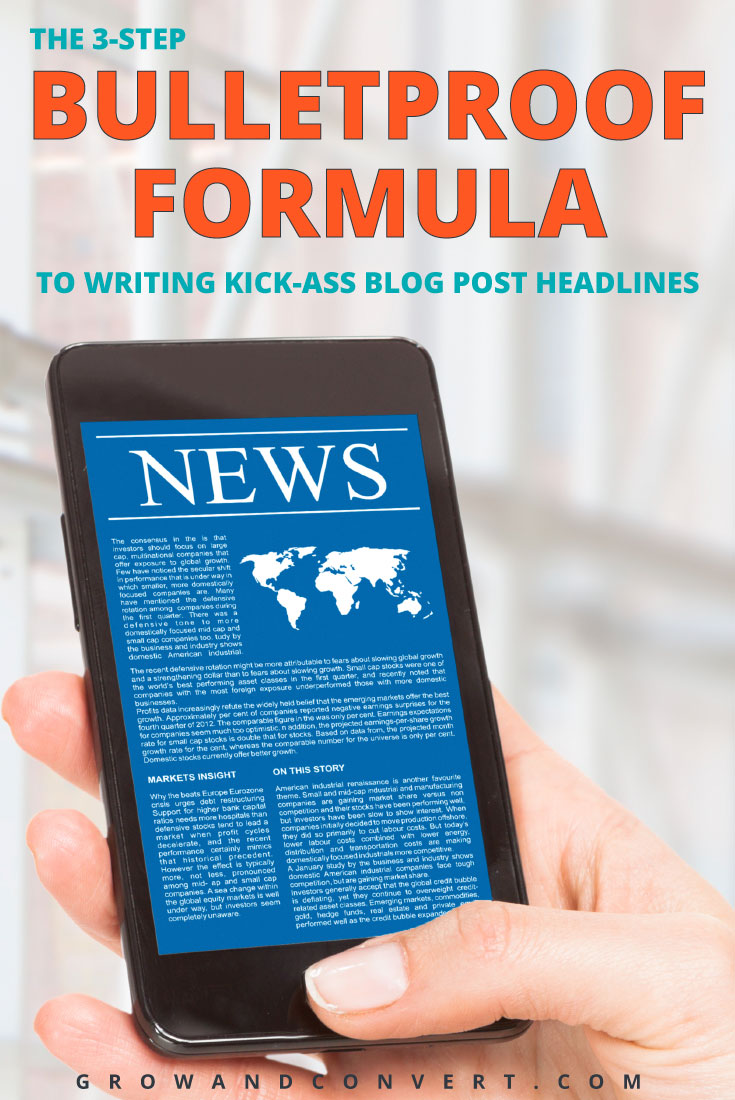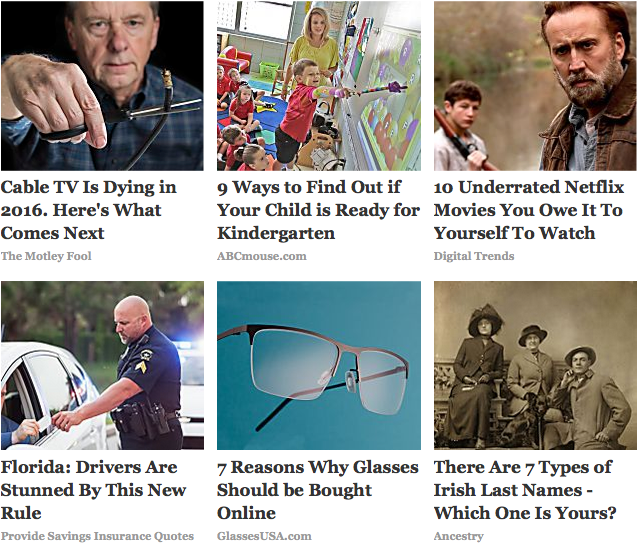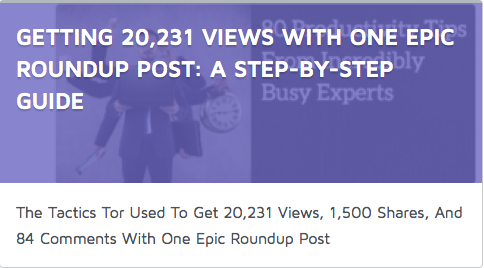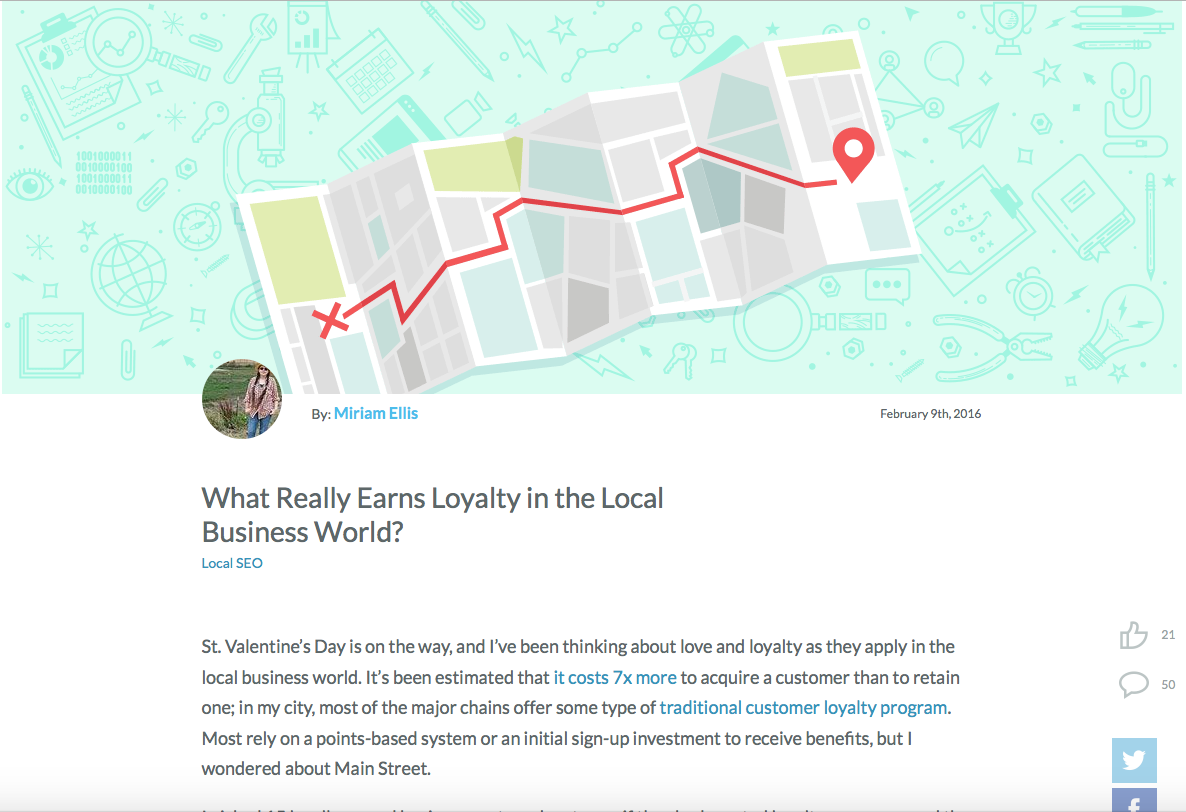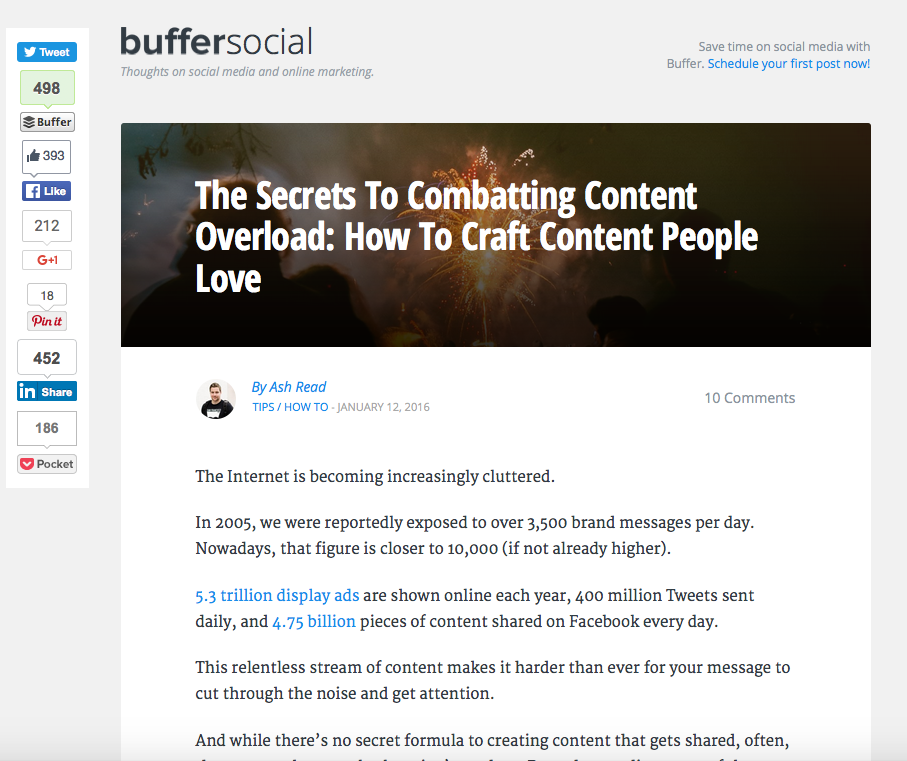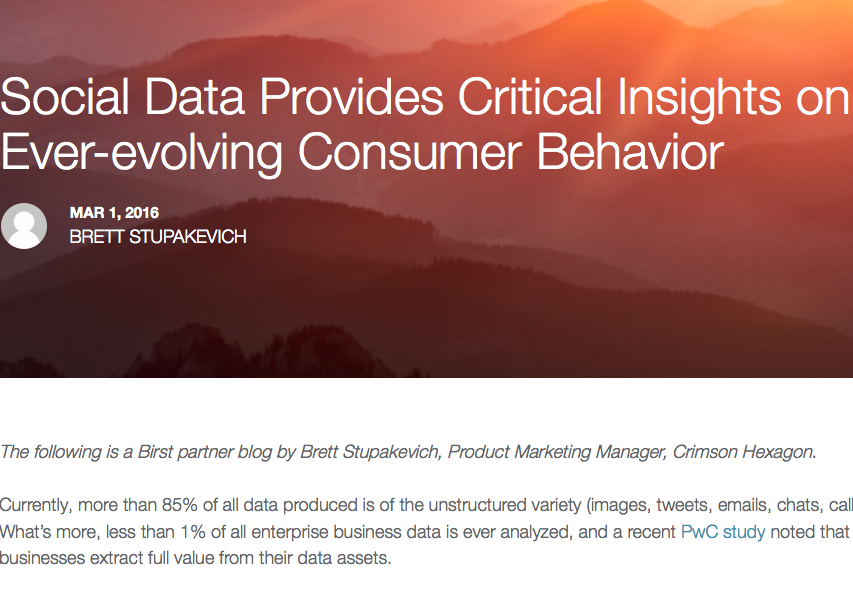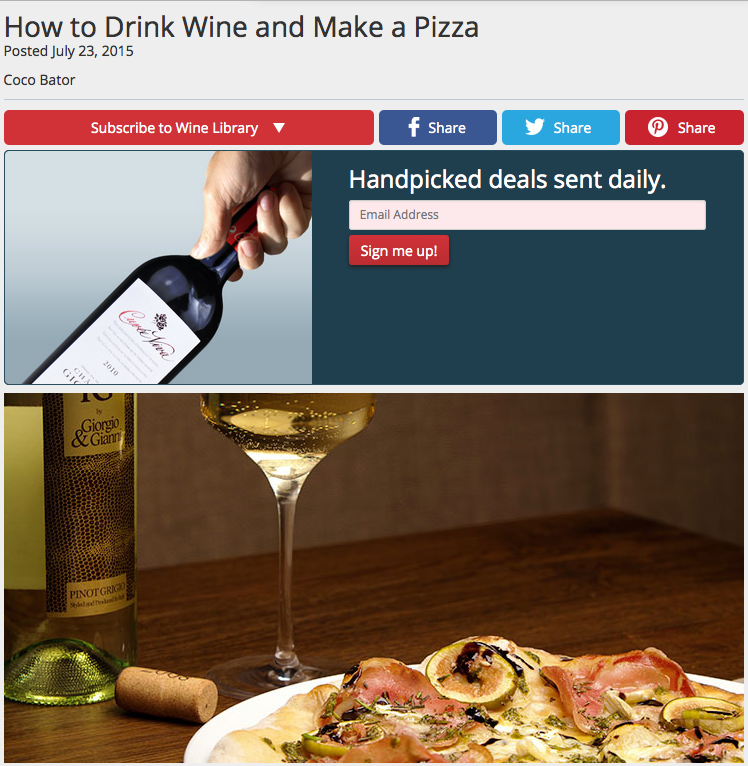8 out of 10 people read the headline. Only 2 out of 10 actually read the body copy.
In other words, if you screw up your blog post headline, it’s almost like you didn’t even write that new blog post you’ve been working on for weeks because no one is going to be reading it.
Like Benji once said in a conversation we had together:
Headlines make or break you.
But it can be frustrating to spend hours writing a killer headline, especially after you already spent 5, 10, or even 20 hours writing the actual post in the first place. And what does “killer” even mean? Does it mean writing “clickbaity” headlines you’d see at the bottom of Huffington Post articles?
No, it’s not that difficult.
Even though those are great examples to study for general headline writing purposes, it can actually be much simpler than that.
The only problem with writing a blog post headline is that it requires a completely different skill from content writing. Crafting a good headline requires that you have copywriting skills. The type of writing designed to persuade and promote stuff to people.
And while it normally takes thousands of hours to get good at copywriting, what if I told you there was a set “formula” you could follow that would automatically produce kickass headlines that get you more clicks, shares, and traffic without taking hours of your time to write down 50+ variations?
Fortunately, there is.
And with 7 years of hardcore direct response copywriting under my belt, I’ll let you “pick my brain” about it for a bit as I reveal to you the step-by-step headline writing shortcuts you can use on your blog posts headlines as early as tonight if you wanted to.
What Makes A Good Blog Post Headline
A good blog post headline is designed to instantly grab the attention of your reader and sell them on reading the very next line.
So how do you acquire someone’s attention?
It’s pretty simple.
You have to write something that would be interesting to that person.
And the best, most straightforward way I’ve come across to making something interesting is by following this equation from the world’s greatest living copywriter, Gary Bencivenga.
Interest = Benefit + Curiosity
In other words, it basically comes down to 2 things.
The first is the benefit.
I should be able to read your headline and know I’m going to get something that benefits me, such as learning how to lose X amount of pounds.
The second is curiosity.
I should not be able to predict what the actual article is going to say just from reading the headline. The goal is to tease your reader that there is something cool to learn if they continue reading.
Combine these two things and you’ve got yourself a headline that will make even the most bored reader hyped up and absolutely lusting over your content.
The 3-Step Bulletproof Formula
1. What’s the interesting, weird, or shocking piece of info inside?
David Ogilvy once said, “It takes a big idea to attract the attention of consumers and get them to buy your product. Unless your advertising contains a big idea, it will pass like a ship in the night.”
And while we’re not selling a product with a blog post headline, we are still selling an idea. So we must absolutely, positively have a big idea in our blog post headline.
The bad news is that big ideas are extremely hard to come by, even for copywriting legends like David Ogilvy. The good news is that we don’t need to come up with anything crazy for a blog post headline.
All you need to do is pick out the one piece of information from your article that would catch the eye of your reader.
Of course, this assumes you must write your post first or at least outline it, whether on paper or mentally, before writing the headline.
But once that is done, it’s time to analyze it.
Tactic #1: Juxtaposition
One really useful shortcut to find that eye grabbing big idea or hook is juxtaposition. In other words, think opposites.
Some examples of this includes being able to do days worth of work in just minutes, burning a ton of fat while eating donuts, reading 10 books in just one day, the ugly guy who dates hot women, and more.
Here’s an example of one from SumoMe.
Tactic# 2: Real Specifics
Another easy way is looking for real specifics.
By specifics, I really do mean anything that is specific. I’m talking about exact numbers, people, places, brands, or anything else.
A perfect example of this in action is this headline from Brian Dean of Backlinko.
Tactic #3: Unique Mechanism
Finally, a third thing you can keep an eye on is your “unique mechanism”. This is the “thing” that makes your product work and separates itself from the competition.
Some examples include selling the only knives that use German steel, selling a fat burner that uses pharmaceutical grade Garcinia Cambogia. or selling the P90X workout program which uses “muscle confusion” to help you burn fat faster.
For you, you might be sharing a blueprint, 3-step formula, cheat sheet, checklist, a specific traffic source, a specific sales method or anything of that nature. Whatever that is, put it in your headline.
Here’s an example of that from Derek Halpern of Social Triggers.
2. What headlines can you swipe to give you a starting point?
In direct response copywriting, we don’t really deal with “creative” advertising. It’s not about who can come up with the most creative, clever sounding, or cool piece of copy. It’s about what you can come up with that will get the best response, which in this case “response” means getting someone to click and read.
That’s why swipe files are massively popular with direct response copywriters. A swipe file is just a collection of highly successful samples that you can use to model your copy after or to gather inspiration from.
Here’s some to get you started:
6 Steps To Your First 100 Email Subscribers (The Easy Way)
Getting 20,231 Views With One Epic Roundup Post: A Step-By-Step Guide
How A Simple Email Popup Can Score 6-Figure Deals
Hillary Clinton vs Bernie Sanders: Which Is The Better Digital Marketer?
17 Email Marketing Lessons I Learned After Writing Over 1,000 Promotional Emails
To start building your own, just keep track of the blog post headlines that make you feel compelled to click.
Then put all of those headlines in a word doc or excel spreadsheet and you’re good to go.
Once you’ve built a little swipe file, all you have to do now is “plug in” your information.
People do this all the time with “How to do X” or “The Ultimate Guide To X”, but you can only repeat those so many times.
So let’s take for example you’re writing a nutrition article about your vegan protein shake, SunWarrior.
You can do…
- 3-Steps To Building 10 Pounds Of Muscle With SunWarrior Protein
- How This Nutrition Secret Can Help Men Build 10 Pounds Of Muscle In 6 Weeks
- 17 Health Benefits From Taking Vegan Protein Shakes Like SunWarrior
These are just examples and I’m sort of forcing them into this just for sake of time and argument, but this is how you should be thinking. There’s no need to start from scratch. Just get what is working already and model after them.
Also, to speed up the “swiping” process even more, look for patterns. So instead of going through your swipe file every single time, memorize the different angles used. Some posts use the “how to” angle, some start with a “6 steps to do X” angle, others start with “Why do X” and so on.
Just doing this will make headline writing even faster.
3. What power words would take it to the next level?
This is the final step.
This is where you “polish up” your headline by making it sound incredibly compelling through the use of power words. A power word is usually just extra adjectives or a verb used to spruce up normally bland sounding stuff. Sometimes, it involves rewriting parts of the headline itself.
So let’s take the 3 headlines we wrote above.
- 3-Steps To Building 10 Pounds Of Muscle With SunWarrior Protein
- How This Nutrition Secret Can Help Men Build 10 Pounds Of Muscle In 6 Weeks
- 17 Health Benefits From Taking Vegan Protein Shakes Like SunWarrior
Instead, we can say:
- 3 Easy Steps To Building 10 Pounds Of Muscle With SunWarrior Protein
- How This Stupid Simple Nutrition Secret Can Help Any Man Build 10 Pounds Of Muscle In 6 Weeks
- 17 Jaw-Dropping Health Benefits From Taking Vegan Protein Shakes Like SunWarrior
You may use 3+ power words, you may just use 1, or you may even use none. It really depends on what you’re writing about, how you are using them, and if you have any character length limitations.
For an amazing list of power words, check out this post from SumoMe.
Now, let’s get into real life examples.
Moz
So let’s review one of Moz’s blog posts. The post we’re going to check out is titled: “What Really Earns Loyalty In The Business World?”
This is a decent headline, but it really doesn’t capture my attention. I’m not racing the clock to actually click on it and read through the entire thing.
So let’s create some alternatives using the 3-step formula.
Step #1: What’s the interesting/weird/shocking…etc piece of info inside?
The main argument of this article is that traditional customer loyalty programs don’t really contribute to actual customer loyalty. Instead, what really makes a customer loyal are basic acts of kindness.
So instead of focusing on the general question of “What Really Earns Loyalty In The Business World?”, we need to focus on the basic acts of kindness.
Step #2: What headlines can you swipe to give you a starting point?
To write this, I didn’t have a swipe file right next to me. However, I already know that headlines that start with “why this happened” or “why didn’t this happen” are headline staples used everywhere.
Furthermore, mentioning “basic acts of kindness” may not be a good idea. I feel like there may be a good chance that people read that and say, “oh, I know this already” or “Oh, it’s one of those articles again”. So to avoid being too obvious, it would be best to position it as a secret or something similar.With those 2 thoughts, now these headlines can start taking shape.
Why Traditional Customer Loyalty Programs Don’t Work And The One Thing That Will
The Secret That Will Actually Improve Customer Loyalty For Your Local Business
Step #3: What power words would take it to the next level?
Now it’s time to polish up these headlines to make them sound cooler. By adding in stronger words and rewriting parts of the headline where necessary, here’s what I came up with:
Why A Traditional Customer Loyalty Program Won’t Do A Damn Thing For Your Local Business (And The One Thing That Will)
The Little Known Secret That Will Have Customers Raving About Your Local Business For Life
Buffer
Now, let’s move on to Buffer.
For this example, we’re going to look over the headline “The Secrets To Combatting Content Overload: How To Craft Content People Love”
The main problem I see with this headline is that there is no one big idea. This headline sounds like it can be two different posts altogether, which is something you want to avoid.
Always look to have one big idea.
With that said, here are some alternative headlines that might do better.
How To Create Content That Sticks Out Like A Sore Thumb In A Flooded Marketplace
The Drop Dead Simple Secret To Creating Content Your Audience Will Absolutely Love
As you can see, I didn’t even have to go through the 3-step process because all the information I needed to know was in the headline itself. It was just a matter of picking the “how to make good content” angle and using power words/phrases to do the rest.
Birst
What about unexciting or even “boring” pieces content?There’s a saying in copywriting world that goes “there’s no such thing as a boring product, only a boring copywriter”.
And while analyzing “Social Data Provides Critical Insights on Ever-Evolving Consumer Behavior” won’t exactly be the highlight of my day, we can still make it much better than what it is right now.
So let’s dig deep on this one.
Step #1: What’s the interesting/weird/shocking…etc piece of info inside?
When I read the current headline and see “ever-evolving consumer behavior”, I immediately think of Darwin and evolution. Just a possible thought to keep in my head.
Reading through the content, I find a sentence that mentions there are 3 ways social data can reveal previously unknown opportunities
Another piece of info I like says that campaign managers can shift a marketing campaign “mid-flight”.
And last is a sentence that says that this social data can help companies in retail, consumer goods, or consumer services build a true competitive advantage.
Step #2: What headlines can you swipe to give you a starting point?
I’m leaning towards a “How X” headline, a “[Insert Number] steps to do X” headline, and possibly a “Why X” headline.
Here’s the best one I was able to come up with.
3 Ways Retail, Consumer Goods, And Consumer Services Businesses Can Leverage Social Data To Find Their True Competitive Advantage
Step #3: What power words would take it to the next level?
Now, lets polish it up.
3 Little Known Ways Retail, Consumer Goods, And Consumer Services Businesses Can Leverage Social Data To “Unlock” Their True Competitive Advantage
If you want to shorten it, you can opt for:
3 Little Known Ways Retail And Consumer Facing Businesses Can Leverage Social Data To “Unlock” Their True Competitive Advantage
I think that’s our winner right there.
Now compare that to the original “Social Data Provides Critical Insights On Ever-Evolving Consumer Behavior”. Big difference.
And I did it all without knowing a thing about this kind of stuff. All I did was take already existing information within the original article and put it on the headline in an interesting way.
Wine Library
So Gary Vaynerchuk is one of my heroes, but even his Wine Library site has some copywriting problems we can fix up.
Wine Library, for those that don’t know, is both a brick & mortar AND an e-commerce business that sells wine. So if you’re in the e-commerce space, then this is for you.
In this example, we’re going to analyze the post “How To Drink Wine And Make Pizza”
Step #1: What’s the interesting/weird/shocking…etc piece of info inside?
From the looks of it, this is a really short and straightforward post. The things I like about it are the 5-step recipe to making homemade pizza and the perfect wine pairing that would go with either a meat or vegetarian pizza.
Step #2: What headlines can you swipe to give you a starting point?
I decided to keep it simple and stick with the “how to” angle.
How To Make Homemade Pizza In 5 Steps (Plus The Perfect Wine To Pair It With)
Step #3: What power words would take it to the next level?
Now, lets fix it up.
How To Make Delicious Homemade Pizza In 5 Easy Steps (Plus The Perfect Wine To Pair It With)
Conclusion
Gary Vaynerchuk says all the time how he is a “day trader” for attention.
That’s because gaining someone’s attention is quite possibly one of the harder things you can do these days with all the content that is floating around. That among other things only gives you more reason to work on your blog post headlines.
And while the 3-step formula I gave you can be done on the fly, it does take some practice.
However, I guarantee you that once you get used to it, you’ll be able to come up with irresistible blog post headlines on demand, 24/7, for any blog post your heart desires.
 Danavir Sarria is the founder & master shifu of CopyMonk, a site dedicated to helping business owners generate more traffic, leads, and sales with “ancient” copywriting secrets.
Danavir Sarria is the founder & master shifu of CopyMonk, a site dedicated to helping business owners generate more traffic, leads, and sales with “ancient” copywriting secrets.
Want us to write an in depth case study or story like this about you or your company? We’ll also drive traffic to it. Apply here.
Like this article? We produce stories like these for our clients, learn more here.


